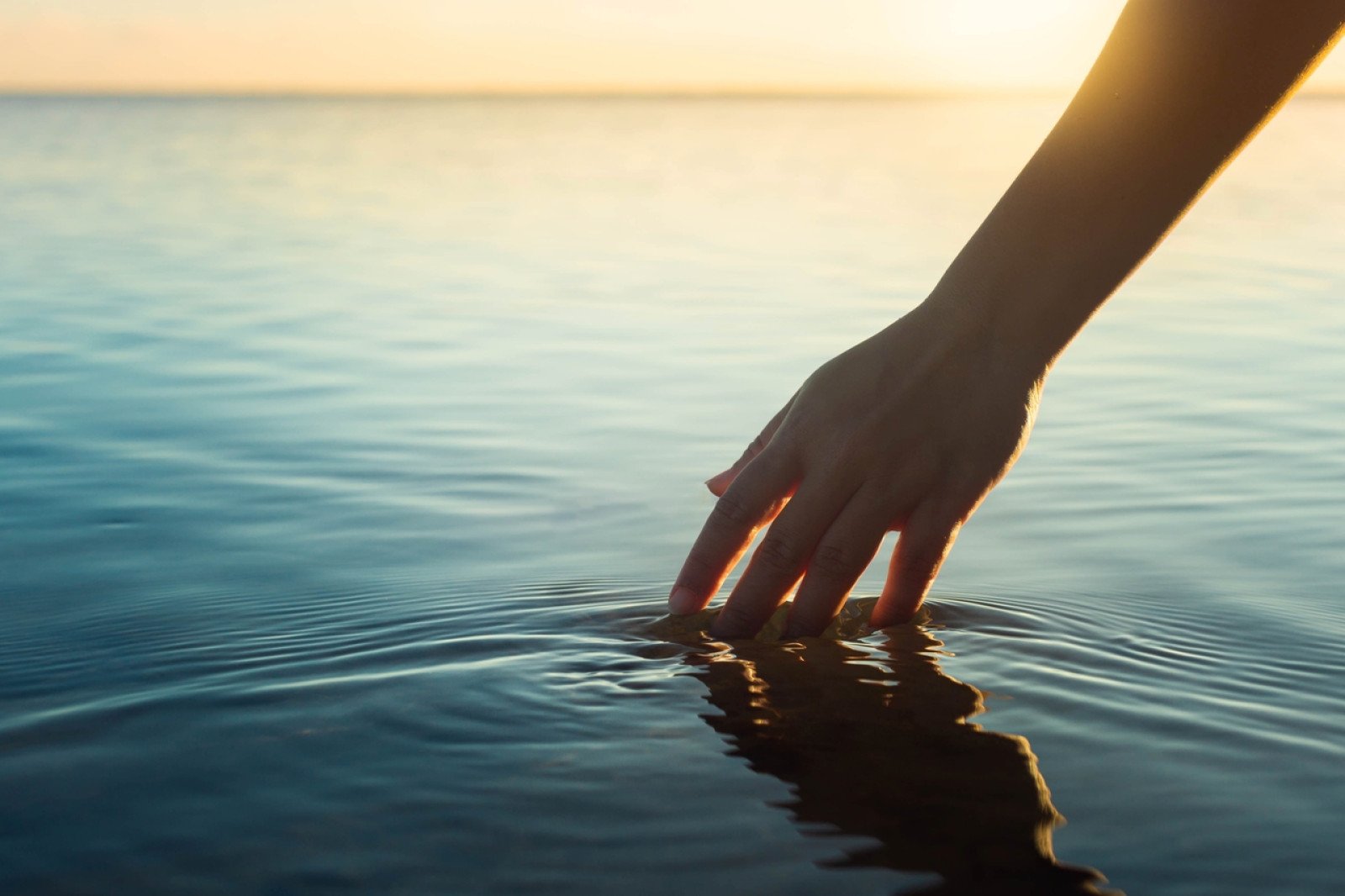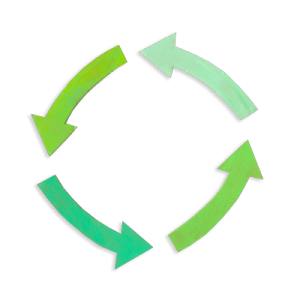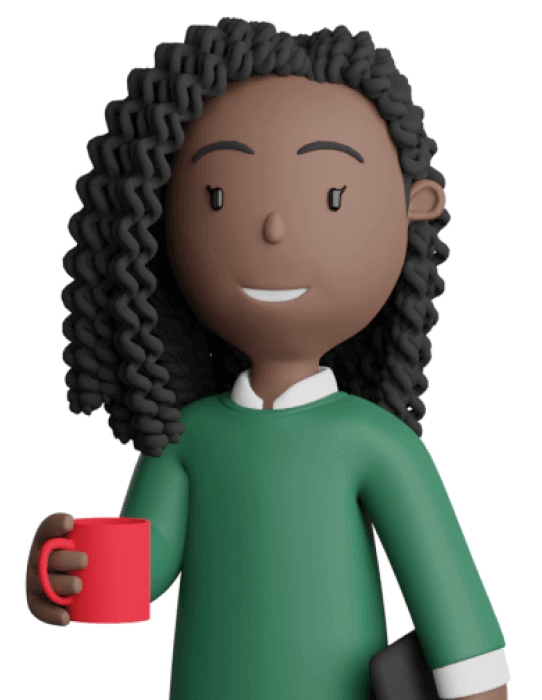
Overview
What does it mean to honour water? Students explore Indigenous perspectives and discover some of the ways they can honour water using observations and inferences.
Instructions
What you'll need
- "Honouring water" slideshow
- "Honouring water" worksheet
- Screen and projector
- Present the "Honouring water" slideshow and show slide 2. Ask your students:
- What are some ways you honour someone at school?
- What are some ways you honour someone at home?”
- Show slide 3 and invite students to suggest how Indigenous peoples might protect, respect, and honour water. Play the "Honouring water" video as an example of how the Leq'a:mel Nation in British Columbia honours water.
- Provide each student with a copy of the "Honouring water" worksheet. Explain that they will be viewing images that show various ways of honouring water; their task is to note any observations and inferences that they might have.
- Show slides 4-7 and read the different ways Indigenous peoples honour water. Encourage students to look for ideas about how we might honour water, and add their ideas to their worksheet.
- Show slide 8 and explain that Indigenous artists Michael Blackstock and Annerose Georgeson made this painting to honour the Spirit of Water, recognizing how “each stream has its own history, flavour and voice, and yet it has the potential to form a larger whole.” Ask your students to take a few moments to note any observations and inferences, then share their thinking with the class.
- Conclude the activity by inviting students to suggest actions they could take to honour water. Remind students to use the ideas that they collected in this activity to guide their thinking.
Modify or extend this activity
Modifications
- For younger students, consider reducing the number of images and having students orally share their observations.
Extensions
- Create a drawing or painting to show a way you can honour water.
- Make a class art exhibit with images and words of the ways your class honours water. It could be a digital exhibit that you share with other classes and with your families.
- For more ideas about how Indigenous peoples honour water, consider having students read or listen to Walking with A’no’:wara, or view the video Honour Water: Miigwech Nibi from Elizabeth LaPensé on Vimeo.
Curriculum Fit
Kindergarten Science
Big idea
- Humans interact with matter every day through familiar materials.
Content
- Local First Peoples uses of plants and animals
Curriculum competencies
Questioning and predicting
- Demonstrate curiosity and a sense of wonder about the world
- Ask simple questions about familiar objects and events
Planning and conducting
- Make exploratory observations using their senses
Processing and analyzing data and information
- Recognize First Peoples stories (including oral and written narratives), songs, and art, as ways to share knowledge
- Discuss observations
Applying and innovating
- Take part in caring for self, family, classroom and school through personal approaches
Communicating
- Share observations and ideas orally
Grade 2 Science
Big idea
- Water is essential to all living things, and it cycles through the environment.
Content
- Local First People’s knowledge of water:
- Conservation
- Connection to other systems
Curricular competencies
Questioning and predicting
- Ask questions about familiar objects and events
Processing and analyzing data and information
- Recognize First Peoples stories, songs, and art, as ways to share knowledge
Communicating
- Communicate observations and ideas using oral or written language, drawing or role-play
Assessments
Assess students’ ability to:
- Recognize First Peoples stories and art, as ways to share knowledge.
- Communicate observations and ideas using oral or written language.
- Ask questions, gather and interpret ideas.
Teaching Notes
Indigenous beliefs about water
- Water is sacred.
- It symbolizes purity and life.
- Water is like a member of your family and must be protected, respected, and loved.
- It is important to teach children to know and respect water’s role in our lives.
- Water is the most life sustaining gift in nature.
- It connects all living beings.
- Water sustains us, flows between us, within us, and replenishes us.
- Some Indigenous people have a daily ceremony- either at dawn or at dusk, where they go to the water to seek strength and heal their troubles.
- Water ceremonies and water songs are ways Indigenous Peoples give thanks and show respect for water.
- Usually women have the role of taking care of the water, showing respect and gratitude in ceremonies and songs.
- Some First Nations honour water by going for “water walks,” walking around bodies of water with Elders and other people
- The walks are to raise awareness about the poor water conditions and prayer is said for the water during the walks.
- It is important to protect water from pollution, drought and waste.
- If we take from nature we also need to give back.
- If we damage nature we need to restore it.
- Healthy water means a healthy body and a healthy ecosystem.
Children and water
- Children want to be with water, learn from water and watery places and return to water.
- Playing in the rain offers new experiences and perspectives; water is also a gift for the trees, birds and the river.
- Children are drawn to stick and water play.
- They throw stones back to the water, jump in puddles.
- They notice turtles on logs, investigate velvety green mosses revived by spring rains and make up stories about muddy animal tracks.
- They like drinking wild peppermint tea outdoors, collecting water for the vegetable garden and say that water nestled in flower petals are the drinking cups for bees and birds.
- We learn the ways of the ones who take care of us, so we may take care of them.
- With Indigenous knowledge holders and storytellers, we walk together and learn that each element, plant and animal not only has a name but a spirit, a story, a gift and a responsibility, as do we humans.
- Nature is not just seen as a resource or commodity, but something that engages mind, body, heart and spirit together.
- Being respectful of and having respect for water is important.
- Experiencing and connecting to water in its natural environment is essential for children to develop confidence.
- Building a healthy relationship not only with the environment, but with all those who call the land home is crucial.
For more information go here.
How this activity was developed
These materials were created with guidance from Indigenous educators, subject matter experts and thought leaders to help draw upon important teachings, learnings, and Indigenous perspectives.
For centuries, the traditional western view of water has often been focused on its value as a resource. Indigenous people have a unique relationship with the waters of British Columbia. Since time immemorial, water has played a sacred role and is seen as a living entity. How water is used must be carefully considered with a view towards not just the immediate need and impact, but the needs and perspectives of generations to follow.
We are dedicated to deep listening and respectfully highlighting Indigenous ways of knowing in the materials we provide B.C. educators. If you have any feedback for us on these activities, or suggestions for others, please email schools@bchydro.com. We would love to hear from you.
About the artist
The design of the worksheets in this activity was a collaborative effort with Indigenous artist Kelli Clifton. Kelli Clifton was born and raised in Prince Rupert, British Columbia and is Gitga’at from the community of Hartley Bay. Clifton is interested in using her artwork as a form of storytelling—especially in relation to her Ts’msyen language (Sm’algyax), her coastal upbringing and her experiences as an Indigenous woman. Clifton currently lives in her home community where she continues to practice her art and teaches Sm’algyax at a local high school. Learn more about Clifton's art on her Facebook page.
BC Hydro’s commitment to reconciliation
BC Hydro exists to serve British Columbians by providing clean, reliable and affordable electricity. We recognize that maintaining and developing the system has impacts on the lives and interests of Indigenous people. To support our move towards true and lasting reconciliation, BC Hydro will acknowledge past wrongs, listen to Indigenous perspectives and seek shared understanding with First Nations communities and governments.
Learn more about our Statement of Indigenous Principles.







